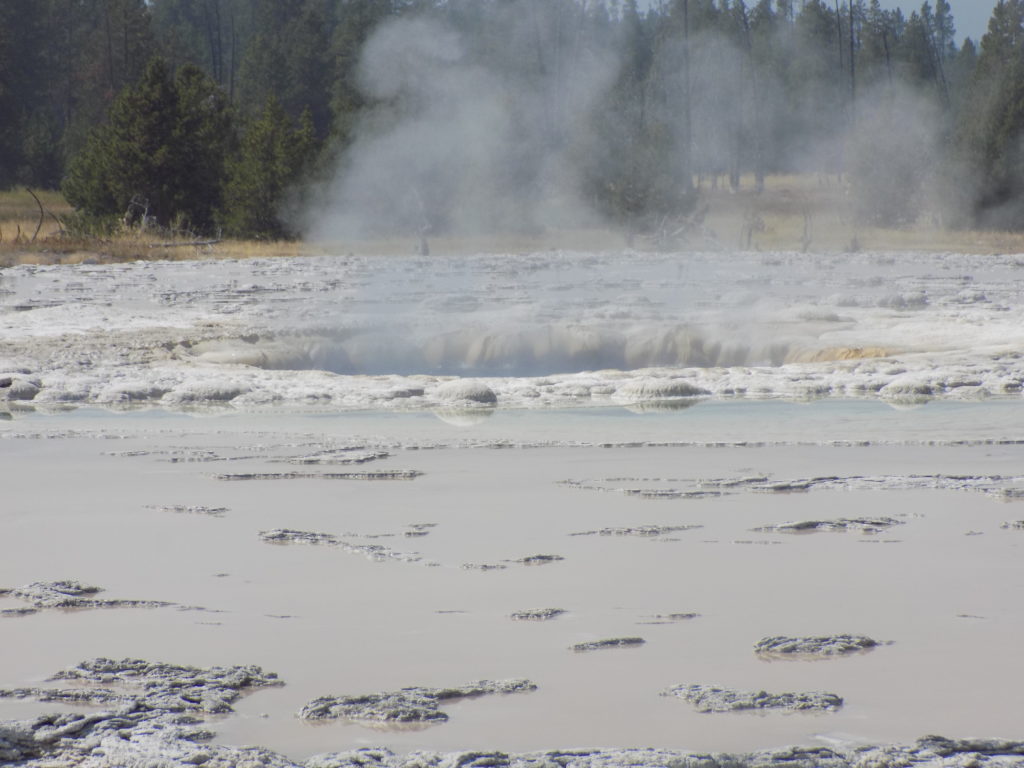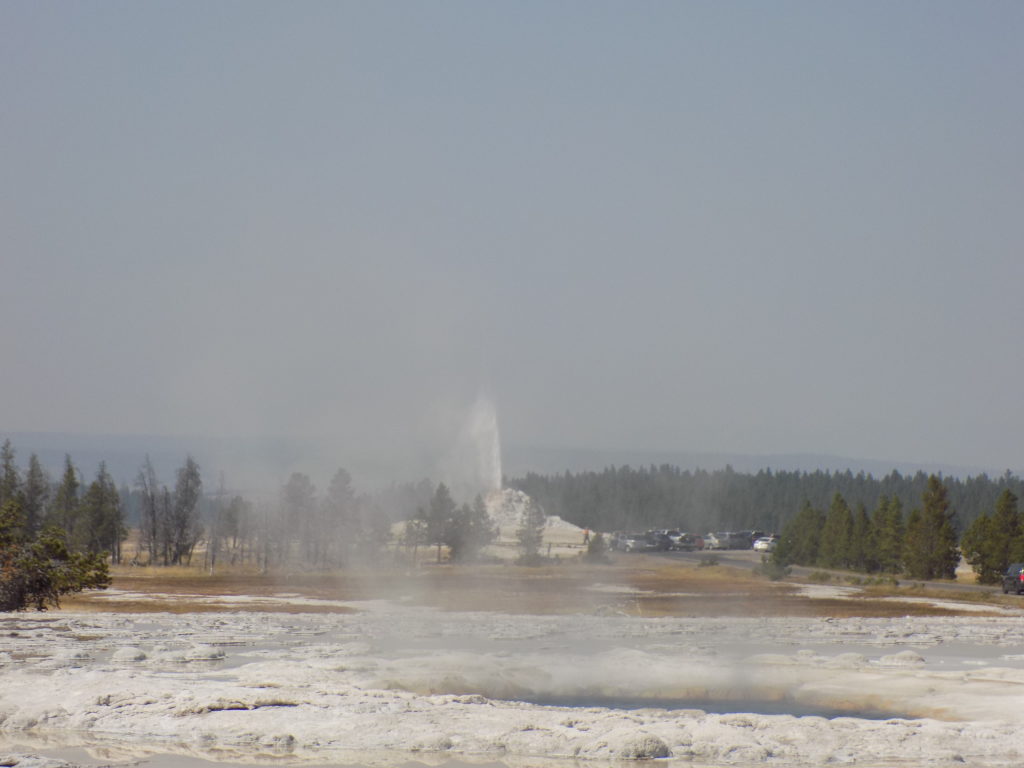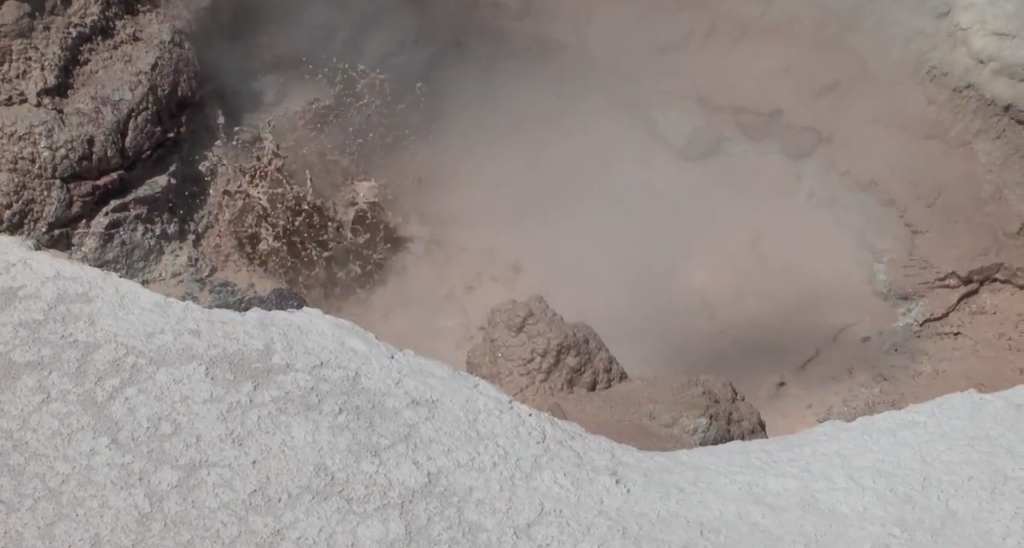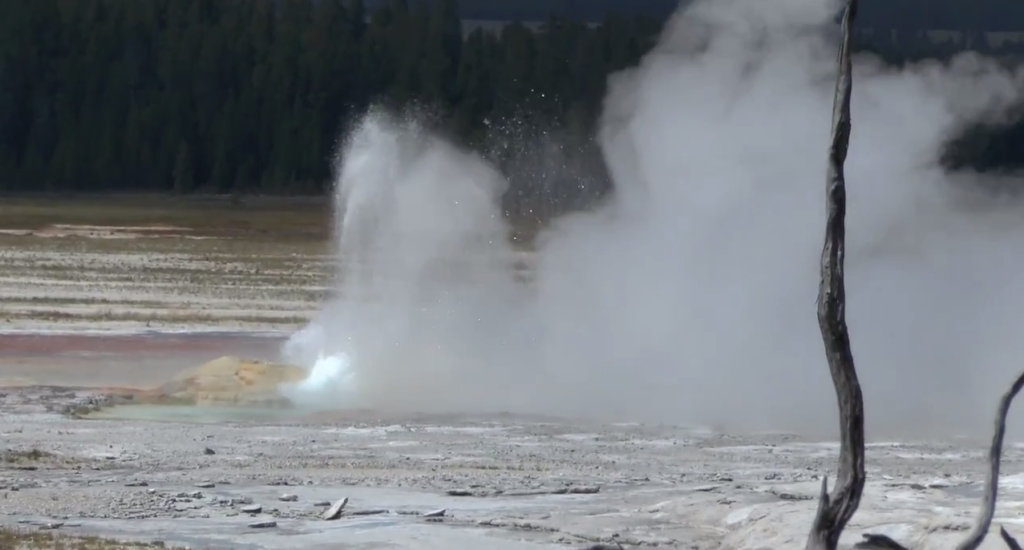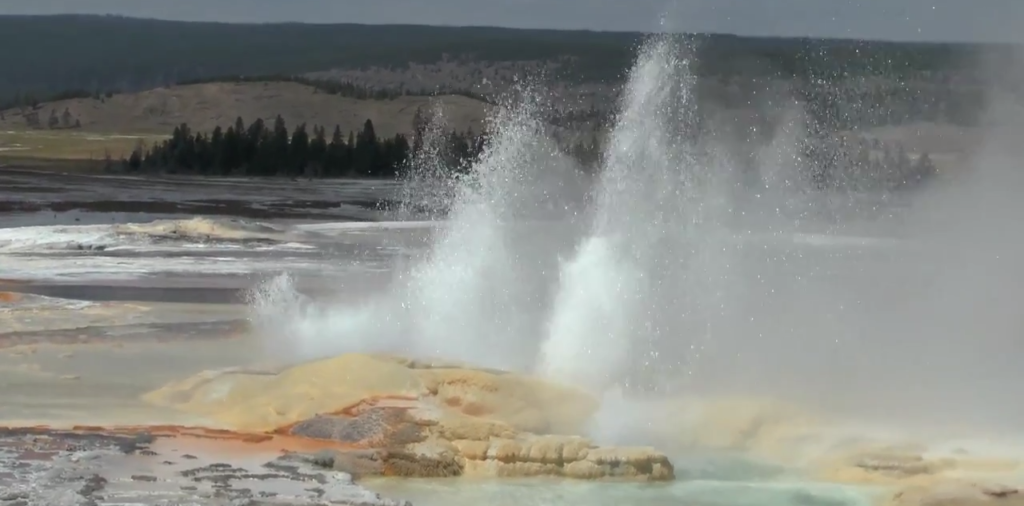Next stop Firehole.
Writing about this segment of the day in Yellowstone NP will be a real test of my self-control. You see, as I turn to head north my next destination is Firehole Lake Drive in the Lower Geyser Basin. Thus far, although I’ve written about the Firehole River on a number of occasions, I’ve refrained from any military, or worse, bodily function jokes and puns. But now, it’s going to be Firehole this and Firehole that making it, as I noted above, a real test of my self-control.
I wasn’t entirely certain what I would see when I made the right turn from the Grand Loop Road onto Firehole Lake Drive. The park map noted the Great Fountain Geyser and the Fountain Paint Pots. Among the few facts I knew about the Great Fountain Geyser was that if I happened to be fortunate enough to see it erupt, it would be one of the most memorable experiences from my time in the park.
Great Fountain is the only (more or less) predictable geyser in the Lower Geyser Basin but the range of its predicted times is quite broad. (This geyser occasionally enters what the NPS calls a “wild-phase” of extremely long eruptions followed by quiescent periods of as long as three days.) Typically, its periodic eruptions occur every 9 to 15 hours and the NPS website notes that, “It can usually be predicted within an hour or two of eruption,” so even had I returned to the Visitor Center at Old Faithful where the NPS posts the expected eruption times, I’d have had no guarantee of seeing an eruption unless I’d been either very lucky or willing to wait and wait and wait.
(I assumed that the predictions are plus or minus predictions as they are with Old Faithful and to me, this means the prediction window is actually two to four hours. In the area where I live one of the local television meteorologists plays with his temperature predictions in a similar way. It’s a bit of a peeve of mine because he promotes what he calls his three degree guarantee that is, in reality, a six degree guarantee. If he predicts a high temperature of 88 degrees, he takes credit for meeting his three degree guarantee whether the actual high is 85, 91 or anywhere between those two. So, it is, in fact, a six degree guarantee.)
Thus, rather than going south from the Midway to the Upper to try to learn the expected eruption time, I decided to simply take my chances and head directly north to the Lower Basin. (Like the Yellowstone River, the Firehole, flows south to north so, like the falls on that river, the Lower Basin is North of the Upper Basin.)
This is what the Great Fountain looks like when it’s not erupting – and I didn’t see it erupt.
However, when it does erupt, it ejects its water and steam to heights ranging from 75 to 200 feet and it lasts between one and two hours. For comparison, a typical eruption at Old Faithful lasts for one-and-a-half to five minutes and even the impressive 30 minute eruption at Lone Star Geyser that I’d hoped to see pales when measured against Great Fountain.
While I was seated at the viewing stand watching the Great Fountain bubble and steam, I was fortunate enough to see a different geyser erupt. This would be the geyser appropriately called White Dome. Like Lone Star, White Dome is a large conic geyser. The cone forms when water picks up silica as it travels through the underlying volcanic rhyolite (which you recall formed the walls of the Grand Canyon of Yellowstone). Each eruption deposits some of the silica on the surface thereby building an ever-growing cone of geyserite.
In the case of White Dome, the water is also depositing silica on the interior of the cone and gradually narrowing its vent. Once the vent is sealed, the water will need to find other outlets to reach the surface. The most likely outcome will turn the geyser into a pool or a mud-pot. For now, though, this is how the water reaches the surface.
For my final stop in this small area of the park, I had to complete the loop of Firehole Lake Drive and cross the Grand Loop Road to reach the Fountain Paint Pots and take the half mile walk encircling this part of the geyser basin. On this trail, you have the chance to see not only hot springs, mud pots, and paint pots I counted (I think) seven geysers – including one called Clepsydra that erupts as close to continuously as a geyser can. There’s also a stand of dead lodgepole pines that I should have photographed but didn’t. By the time I reached them, although I’d become mostly inured to the sulfurous odor, I was nevertheless ready to leave it behind. I also felt that I didn’t need more pictures of dead trees. But I do have more pictures.
So, what is a mud pot? I’ll start by answering that question with a question. Have you ever used a double boiler to melt chocolate or make a delicate sauce like hollandaise? If you have, you’ve essentially created the stove top equivalent of a mud pot.
Start with a depression at the surface that’s lined with clay or some other practically impermeable material that can collect surface water or rainwater. Think of this depression as the glass bowl in which you’ve put your chocolate to melt. In a place like Yellowstone, you have an enormous amount of volcanically heated thermal water near the surface. This is the equivalent of the boiling water in the pot where you’ve put the glass bowl with the chocolate.
In much the same way that the heat from the water transfers to the glass and slowly melts the chocolate, so the heat from the subsurface thermal water transfers to the water that’s collected in the surface depression and, in some ways, melts the clay. Here’s that process: In and around these areas in nature, you usually find quantities of hydrogen sulfide (hence the rotten egg smell) and some classes of microbes can use the hydrogen sulfide for energy. The byproduct is sulfuric acid. The acid breaks down rocks and clay creating a bubbly gooey mess.
The principal difference between a mud pot and a paint pot is akin to the difference between a simple hot spring and a spring like the Grand Prismatic. Microorganisms in and around a paint pot produce different types of gases and waste thereby generating a spectrum of color as they do so.
Perhaps again because of the ash filtered sunlight, the paint pots weren’t particularly colorful the day I visited
 but, as you can see in the photo, they were bubbly and, to all appearances, gooey.
but, as you can see in the photo, they were bubbly and, to all appearances, gooey.
As for the geysers, I’ll leave you with a pair of looks at the hyperactive Clepsydra.
As I return to the Grand Loop Road I hope I’ve made this visit to Firehole Lake and the Paint Pots of the Lower Geyser Basin both digestible and spicy with no bacterial ill-effects.
